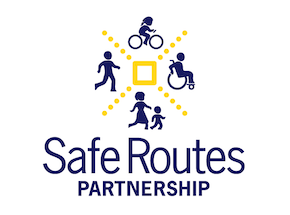This report provides insight into how Transportation Enhancement and Transportation Alternative funds are being used at the national and state levels. The report is a tool for agency staff, policymakers, professionals, and citizens who want to understand how federal fund- ing shapes America’s transportation system and its communities.
Steps to a Walkable Community compilesmultidisciplinary tactics that readers can assemble into customstrategies designed for their community’s circumstances.
Each state DOT is required to develop a data-driven Strategic Highway Safety Plan for programming their Highway Safety Improvement fund. Some of this funding can be spent on bicycle and pedestrian safety for school children.
This paper explores the connection between home values andwalkability, as measured by the Walk Score algorithm.
The Livability in Transportation Guidebook’s primary purpose is to illustrate how livability principles have been successfully incorporated into transportation planning, programming, and project design, using examples from State, regional, and local sponsors, applicable in urban, suburban, and rural areas.
Through active transportation, parks and recreation agencies provide valuable benefits to communities by providing an engine for economic development, increasing health and wellbeing, supporting conservation and providing benefits to all citizens regardless of socioeconomic status.
This report examines some of the states that have successfully dedicated federal safety funds to reducebicycle and pedestrian fatalities and crashes.
This planning manual illustrates why planning for transit-oriented development that serves families is important for creating complete communities and how such integrated planning can be achieved.
School districts are responsible for the education of almost 50 million public school students. This report identifies the larger community interest in decisions about retaining existing schools and deciding where to locate new ones.
This toolkit provides materials that state advocacy organizations can use to ensure state
Departments of Transportation (DOTs) take full advantage of the potential bicycling and
walking funding in MAP-21.

